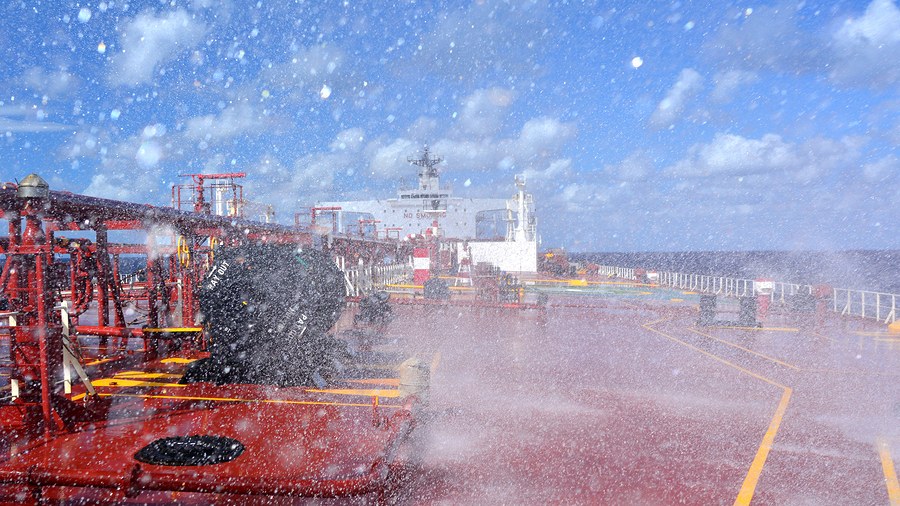Pushing down EEDI targets will help show how serious industry is to meet “ambitious” decarbonisation targets says lobby group.
GREEN lobby groups plan to continue their pressure on regulators to make ship designs more energy efficient than currently planned.
Research published ahead of the last meeting of the IMO’s recent MEPC meeting suggests that on average newbuildings delivered in 2016 were not as efficient as those in the previous years.
The study was carried out by CE Delft, a Dutch research group, on behalf of Transport and Environment, a European lobby group and part of the Clean Shipping Coalition.
The CE Delft research assessed the energy efficiency design index values of vessels delivered to see how efficient they are.
Under regulations that are now part of Annex VI of the marine pollution regulations, newbuildings have to have an EEDI value which has to be a particular percentage under a reference value.
Vessels built between 2013 and 2015 known as phase 0) need to be on or under the reference value for their particular ship type and size, vessels delivered between 2015 and 2020 need to be 10% under, those built in phase 2, which is between 2020 and 2025 need to be 20% and those after 2030, built under phase 3, need to have an EEDI value 30% under the vessel’s reference line.
These regulations, when agreed a the IMO in 2011, were the first set of rules in any industry to target fuel consumption and thus CO2 emissions and an industry’s specific contribution to climate change. However the environmental critics have been pointing out for a number of years that the reference line calculations used information from existing ships built at a time when efficiency was not a priority, therefore the targets are proving easy to meet.
This has already been demonstrated by the number of vessels being built with EEDI values that are significantly better than their mandatory targets.
This has led to calls for regulators at the IMO to increase the percentage targets of phase 2 and phase 3. At an MEPC meeting last year and this the decision has now been made to not change phase 2, but to look at phase 3, either shortening it to being in a tougher phase 4, or to increase the targets for phase 3.
This work is still ongoing.
But now Transport and Environment argues, with this latest commissioned report from CE DELFT, that bulk carriers, tankers and gas carriers built in 2016 have on average worse designs than those built in 2015.
In an email to Fathom-News, Transport and Environment wrote:
“Design efficiency of new build containerships and general cargo also stalled in 2016. Loose design standard (EEDI) is partly to blame. New ships generally over-comply with phase 2 (2020) and even phase 3 (2025) targets 10 years in advance. When making investment decisions shipowners can choose to order the most efficient designs or just the ones merely satisfying the required EEDI. Hence, if EEDI is not tightened there is nothing preventing new build ships from backsliding in efficiency”
As part of the industry’s overall plan to reduce its global carbon footprint, the EEDI is a significant clear indicator of where individual vessels are positioned. T&E is disappointed that large shipbuilder nations such as Japan, China and Korea have not made clear indications of supporting a tighter EEDI and thus the application of fuel saving or emission reducing technologies.
“Not taking action on EEDI will have bearings on shipping decarbonisation,” wrote T&E in its email to Fathom-News “Industry’s position is a testimony that they are not prepared to put their money where their mouth is. How can one pledge to decarbonise yet argue against building/using new efficient ships which will still be sailing around in 2050’s?”
Fathom-News
































